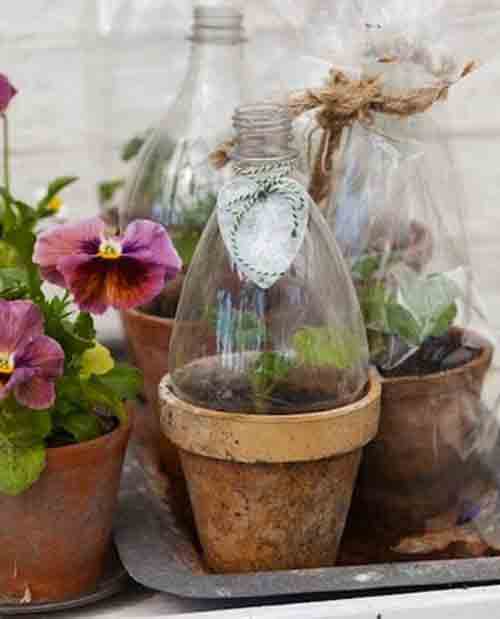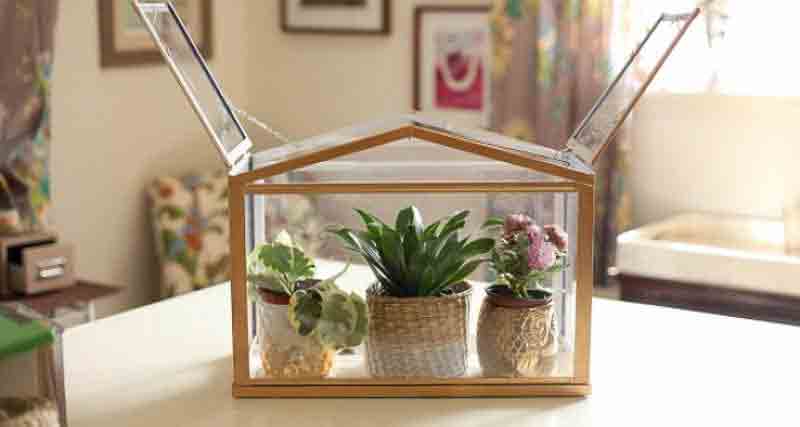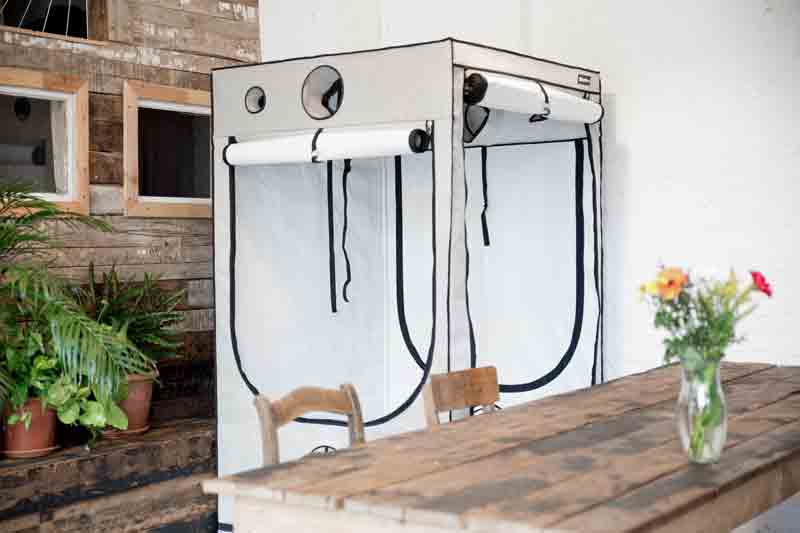Everyone knows what a greenhouse is and its purpose. In fact, it’s a coveted yard feature for avid home gardeners north of the tropics. Yet, the purpose and benefits of an indoor greenhouse escape many. Because you’re already protected from the whims of the wild and the elements inside your home. Or are you? And how do the plants you’re trying to grow feel about it all?
An indoor greenhouse can help control environmental plant problems that exist inside a solid building, and even within that backyard greenhouse. No, your patio tomato, Rex begonia, or rosemary topiary won’t freeze in the house, but they will go into culture shock once moved indoors. And the ambient temperature might be comfortable to you with your sweater and fuzzy slippers – but you aren’t a plant.

Counteracting what happens to you in the winter indoor environment isn’t that difficult. Lotion buffers the heat’s drying effect on your skin. The humidifier does wonders at stopping static shocks, flyaway hair, and parched sinuses. But it’s not enough humidity for most plants unless they’re sitting right on top of the appliance.
An indoor greenhouse can hold humidity in the space that envelops plants. This is important to growing food and overwintering tender plants inside during the cold months because desert natives are one of the only types of plants that remain happy and thriving in such an arid environment. Lack of humidity causes spider mite infestations, excessively rapid drying of growth media, and seed sprouting failures.
Many indoor gardeners see their windows as indoor greenhouses. In terms of plant requirements – especially sun-loving food plants like fruits, vegetables, and herbs – the only window that comes close to being an inhabitable environment faces due south. The roof and overhanging soffit, however, cause the direct sunlight to not be overhead as it should, but somewhere beyond the glass. As a result, plants stretch and bend trying to access a solid connection with their energy source.
Worse still, window sills are often drafty, and always prone to wild temperature swings. All of which causes weak plants, poor growth and structure, meager to pitiful harvests, and sometimes death. So, no, a sunny window is not an indoor greenhouse. If it were, you’d have more control over your plants’ environment!

So, realizing some or all of these predicaments plants face on a windowsill, the gardener moves them farther into a room, using grow lights to replace the sun. However, cold drafts enter every time an exterior door opens. Hot, dry air blasts into every room each time the furnace kicks in. So, changes in the environment are now less radical, but still uncontrollable.
Think of an indoor greenhouse as a spacesuit for your leafy friends and food makers. You see, moving outdoor plants inside your home for winter is akin to holding them hostage in a dangerous, alien environment. Even if your only indoor gardening activity is starting seeds for the backyard garden… you need some form of indoor greenhouse.

They come in many sizes and can cost nothing up to a lot. For instance, you can have more success starting herb seed in a small pot by cutting the top off a 2-liter bottle to create an instant little indoor greenhouse. Removing the cap once you have tender sprouts coming up allows excess humidity to escape and fresh air to enter. That venting is important for stopping damping off and root disease in fragile young plants.
A clamshell food container from produce or baked goods makes a great little indoor greenhouse for starting a few seeds in rockwool starter cubes. Either fashion some venting in the lid or move the newly germinated plants to a larger humidity dome with adjustable top vents. Humidity domes come in several heights and fit a standard nursery tray. Most seed germination kits come with a humidity dome. But they’re usually short, meant to be removed once life rises out of the starter cells. You can buy tall ones from a greenhouse and indoor garden supply stores.
Fancy indoor greenhouses are lovely and very decorative, but they’re also expensive. If they fit your budget, that’s awesome. Just be sure to use the roof panels to allow excess humidity to escape.
You can keep all of these small indoor greenhouse setups warmer than the room’s air by putting a horticultural heat mat under them. But do make sure it has a thermostat, so you can control the temperature!
You can also fashion an indoor greenhouse around your grow rack. It will help protect the temperature and humidity consistency for several trays of plants. But in this situation, and all those discussed above, there’s one thing missing. Air movement.
Hmm… you need a fan. Why? Because plants grow stronger with a little wind. That’s beyond important when you move those tomato seedlings to a pot or plot outdoors. But it also helps to control excess humidity in the indoor greenhouse. And can keep some pests at bay, especially ones that love constantly wet soil, like fungus gnats.

However, you’ll have a heck of a time trying to fit an oscillating fan inside a tiny humidity dome. Even a personal-sized fan is better than none. But then you’ll have proximity problems with the air current too close to some plants, and possibly too weak to reach all of them! So, since you’re growing under lights, why not graduate to the best engineered indoor greenhouse? At least, once your plants are out of the fragile infant stage.
Which is?
A grow tent or grow box. There’s no rule that insists that you have to use them for hydroponic growing. And if you prefer something prettier or want to view your plants through the glass, then build a proper indoor greenhouse. Make it large enough to include a good ventilation system, reliable temperature control, and the wind that strong, healthy garden plants need.
Images courtesy of Cait Stewart, Poppytalk, Plaid Zebra, Cape Coop, and HomeBox (respectively).
I am really digging this thing that I got from Amazon. I tried a few off brand cheaper ones until I went back to ole reliable Gardman who I have been buying things from for the past 20 years. Gardman R687 4-Tier Mini Greenhouse, 27″ Long x 18″ Wide x 63″ High https://www.amazon.com/dp/B000NCTGQE/ref=cm_sw_r_cp_apa_dU0rBbM9GRDM6